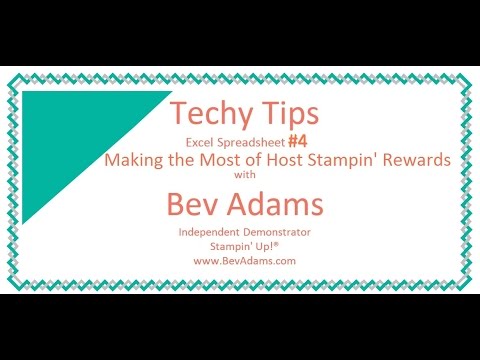5 Ways to Search Excel Sheet Names Efficiently

Efficient Excel Sheet Name Search Techniques

When working with Excel spreadsheets, particularly those with numerous sheets, finding a specific sheet can be cumbersome. Here are five efficient methods to search and navigate through Excel sheet names:
1. Using VBA to Create a Sheet Index

Visual Basic for Applications (VBA) offers a powerful way to enhance Excel’s functionality. Creating an index sheet can simplify the task of locating sheets.
- Open the Excel workbook where you want to implement this feature.
- Press Alt + F11 to open the VBA editor.
- Insert a new module by clicking Insert > Module.
- Enter the following code:
Sub CreateIndexSheet()
Dim ws As Worksheet
Dim i As Integer
' Check if the index sheet already exists, delete if it does
For Each ws In ThisWorkbook.Worksheets
If ws.Name = "Index" Then
Application.DisplayAlerts = False
ws.Delete
Application.DisplayAlerts = True
End If
Next ws
' Add a new worksheet and name it Index
Set ws = ThisWorkbook.Sheets.Add(Before:=ThisWorkbook.Worksheets(1))
ws.Name = "Index"
i = 1
' Populate the index sheet with sheet names and links
For Each ws In ThisWorkbook.Worksheets
If ws.Name <> "Index" Then
ws.Hyperlinks.Add Anchor:=ws.Cells(i, 1), Address:="", SubAddress:="'" & ws.Name & "'!A1", TextToDisplay:=ws.Name
i = i + 1
End If
Next ws
' Adjust the width of the column to fit the sheet names
ws.Columns(1).AutoFit
End Sub
- Run the macro by pressing F5 or by creating a button in Excel to execute the macro.
🔍 Note: This VBA macro assumes that you are okay with having an index sheet titled "Index." If another name is preferred, adjust the script accordingly.
2. Utilize Excel’s Built-In Sheet Tab Search

If your Excel version supports it, the built-in sheet tab search feature can be very handy:
- In the bottom left corner of your Excel window, locate the sheet navigation tabs.
- Click the small arrow next to the last visible sheet tab to access the scroll buttons.
- Click on the drop-down arrow to reveal the list of all sheets, where you can search by typing sheet names.
3. Implementing a Custom Ribbon Button for Quick Search

Creating a custom Ribbon tab with a quick search function can streamline your workflow:
- Go to File > Options > Customize Ribbon.
- Click on "New Tab" to create a new tab, then a "New Group."
- Select "Macros" from the "Choose commands from" dropdown.
- Add a macro for searching sheets, which could be the macro we created or another function to list sheet names.
- Label the button appropriately and customize its icon if desired.
Now you have a custom button that, when clicked, can invoke your sheet search functionality.
4. Keyboard Shortcuts for Sheet Navigation

While not a direct search method, knowing these shortcuts can help you navigate between sheets efficiently:
- Ctrl + Page Up/Down to move between sheets.
- Ctrl + Tab to switch between open workbooks.
- Use Ctrl + F in the Name Box to search for cells within the active sheet.
5. External Add-Ins for Enhanced Sheet Management

There are several Excel add-ins available that offer advanced features for sheet management:
- Asap Utilities: Offers features like listing all sheets, renaming sheets with a pattern, and more.
- Kutools for Excel: Includes options for managing sheets, such as sorting, renaming, and searching.
When choosing an add-in, consider:
- Compatibility with your Excel version.
- The specific features you need.
- Any potential impact on performance.
Each method mentioned above provides an efficient way to manage and search for sheet names in Excel. Depending on your workflow and familiarity with Excel, you might prefer one method over the others. The VBA method offers automation, whereas built-in tools and add-ins provide user-friendly interfaces without scripting knowledge. Incorporating these techniques can save time and reduce the frustration of navigating large workbooks.
By integrating these practices into your regular Excel usage, you'll enhance your productivity, making data handling in large workbooks a more manageable task.
Here's a summary of the techniques:
| Method | User Requirement | Benefits |
|---|---|---|
| VBA Index | Basic VBA Knowledge | Automated search functionality |
| Built-In Search | None (Recent Excel versions) | Quick and simple, no setup required |
| Custom Ribbon Button | Macro Knowledge | Customizable and immediate access |
| Keyboard Shortcuts | Learn Shortcuts | Fast navigation, no setup needed |
| Add-Ins | Installation and Setup | Advanced management features |

💡 Note: The key to efficiently searching sheet names is to find the method that suits your workflow best, whether it involves automation, simplicity, or advanced features.
Implementing one or more of these methods will not only streamline your Excel experience but also ensure you spend less time looking for sheets and more time analyzing your data. Remember, efficiency in Excel can significantly impact overall productivity, especially when dealing with complex and data-heavy spreadsheets.
How do I update the VBA Index Sheet if I add new sheets?

+
You can update the VBA Index Sheet by simply running the macro again. The macro will delete the existing Index sheet and recreate it with updated sheet names.
Can I use these methods in Google Sheets?

+
While some methods like keyboard shortcuts might be similar, others like VBA or custom Ribbon buttons are specific to Microsoft Excel. Google Sheets has its own set of tools for similar functionality.
Are there any limitations to using Excel’s built-in sheet tab search?

+
The built-in sheet tab search is limited by the number of sheets you can see at one time, and it might not be as efficient for workbooks with hundreds of sheets.



